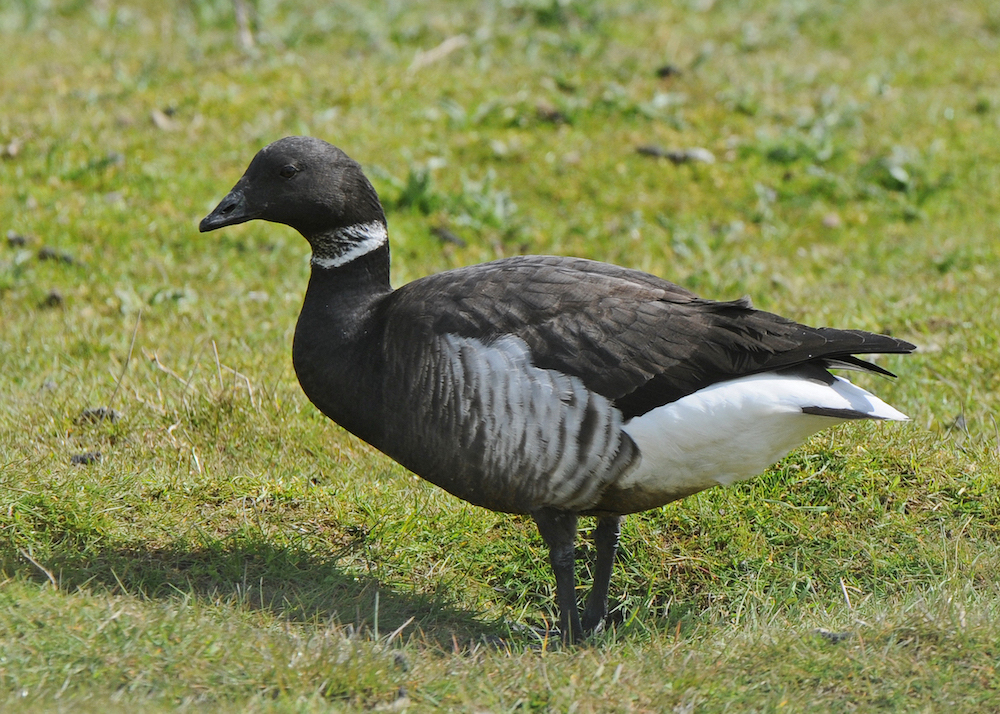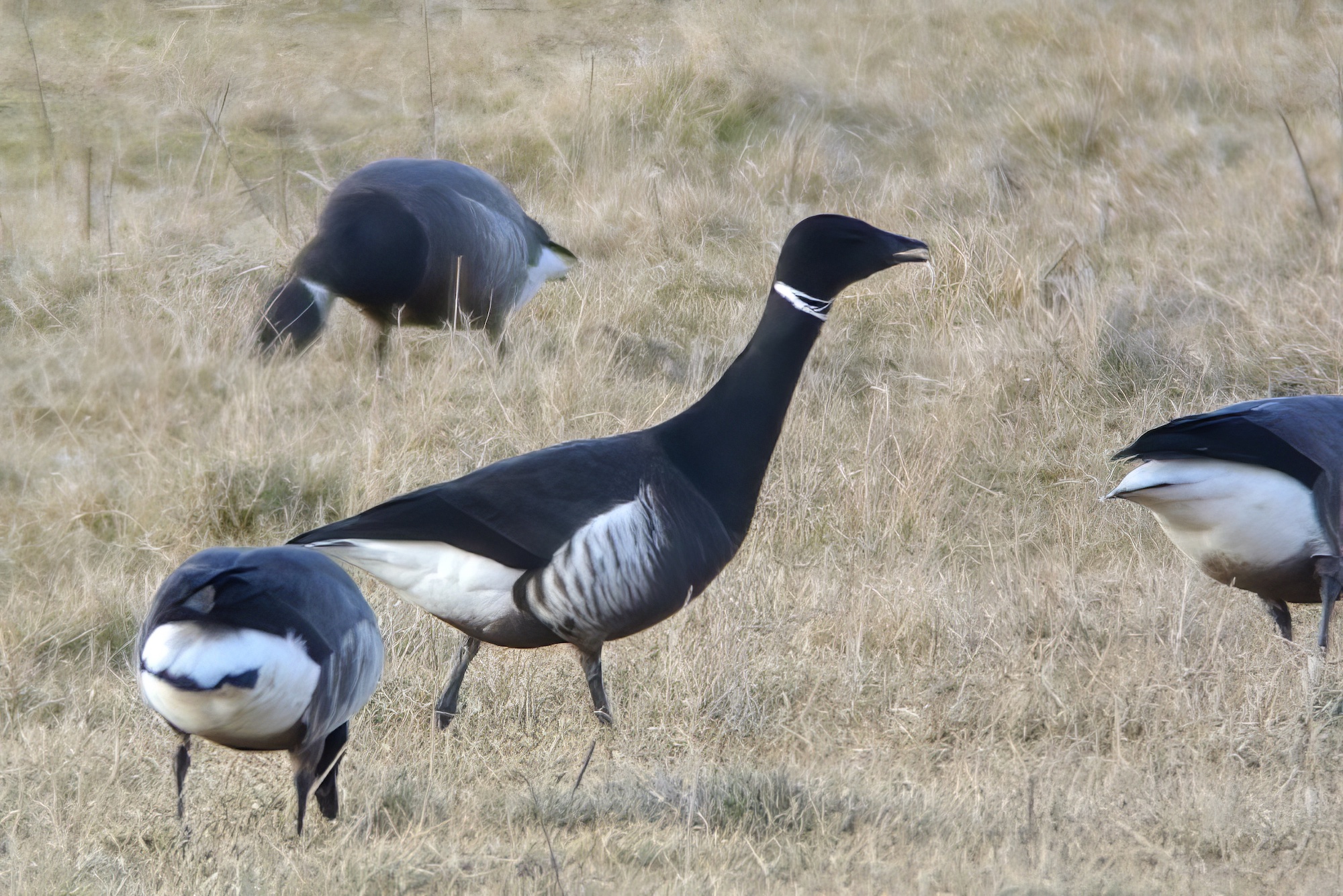Black Brant Branta bernicla nigricans


Black Brant breed in the Canadian Arctic from Melville Island westwards to Alaska and in northeast Siberia westwards to the Taimyr Peninsula wintering on both sides of the north Pacific southwards to Baja California in the east and the Yellow Sea in the west. In recent decades the breeding range of Dark-bellied Brent Geese has expanded eastwards. This has brought them into contact with the westward expanding population of Black Brant in the area of the Taimyr Peninsula, increasing the likelihood of them becoming caught up with westward migrating flocks of Dark-bellied Brent Geese.
Mixed population of Dark-bellied Brent and Black Brant have been recorded in the breeding grounds in the area around the Taimyr Peninsula and perhaps account for an increasing number of hybrid records that are being claimed in Western Europe. The first British record of a mixed pair of Black Brant and Dark-bellied Brent Goose with their family of 6 hybrid young was at Thorney Deeps West Sussex from 8th January to 18th March 1989. Further records were forthcoming from Dorset in 1997 and Norfolk in 2001 and since then several claims have been made as increased observer awareness and closer study of Brent flocks have been made. There can be great variation amongst individual birds and “intergrades” have been reported several times in Lincolnshire the first of which dates back to 1992.
Finder's report: Black Brant at Skidbrooke, January 21st, 1982, first county record.
by Graham P. Catley.
Note: this account is taken from the original submission to the BBRC. There were two records in 1982 and BBRC noted that after records in Essex in 1957 and 1958, this race had been annual since 1974, and, presciently, that no doubt time will show it to be of fairly regular occurrence here.
Circumstances and description
On 21st January whilst counting Pale-breasted Brent Geese, B.b. hrota, at Skidbrooke, I located an individual with the Brent flock was located which showed characteristics of the race B.b. nigricans, colloquially known as the Black Brant. In general appearance it was similar to the other birds of the other two races present, there being 700 B.b. bernicla and 4 B.b. hrota on the day in question. It did however look slightly smaller than many of the others, but it was the plumage which was so distinctive plumage.
The head, neck, breast, and upper belly were a black colour with a brownish tinge to the neck and upper breast in good light, while the lower belly was dark grey and the undertail coverts the normal white. The white mark on the neck was a very prominent feature, being deeper than that of any of the other birds, and forming an almost full collar, joined round the front of the neck, and only narrowly broken at the rear. The upperparts were a dark grey and the flanks a very bright whitish colour, being made more obvious by the contrast with the surrounding dark grey and black of the breast, belly, and upperparts.
Whilst watching this bird it was once surrounded by a group of B.b. bernicla which threatened it with necks held down and aggressive gestures, otherwise it fed normally amongst the flock. It was still present on 23rd January when it was seen by H. Bunn and M. Mellor but was not seen thereafter.
Identification of this race of Brent Goose obviously requires fairly critical examination of Brents, but this individual was certainly more obvious than I would have expected. This is a new race of Brent Goose for the county.
Reference
Catley, G.P. (Undated). Accounts of Lincolnshire rarities: Black Brant at Skidbrooke, January 21st 1982. Lincolnshire Bird Report 1982.
Rogers, M. J., and the rarities Committe with comments by K. E. Vinicombe (1983). Report on rare birds in Great Britain in 1982. British Birds 76 (11): 476-529.
(Account as per new Birds of Lincolnshire (2021), included September 2022)

